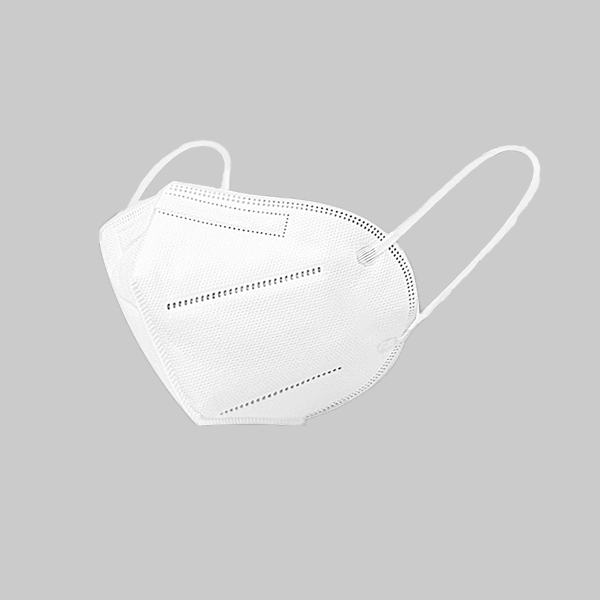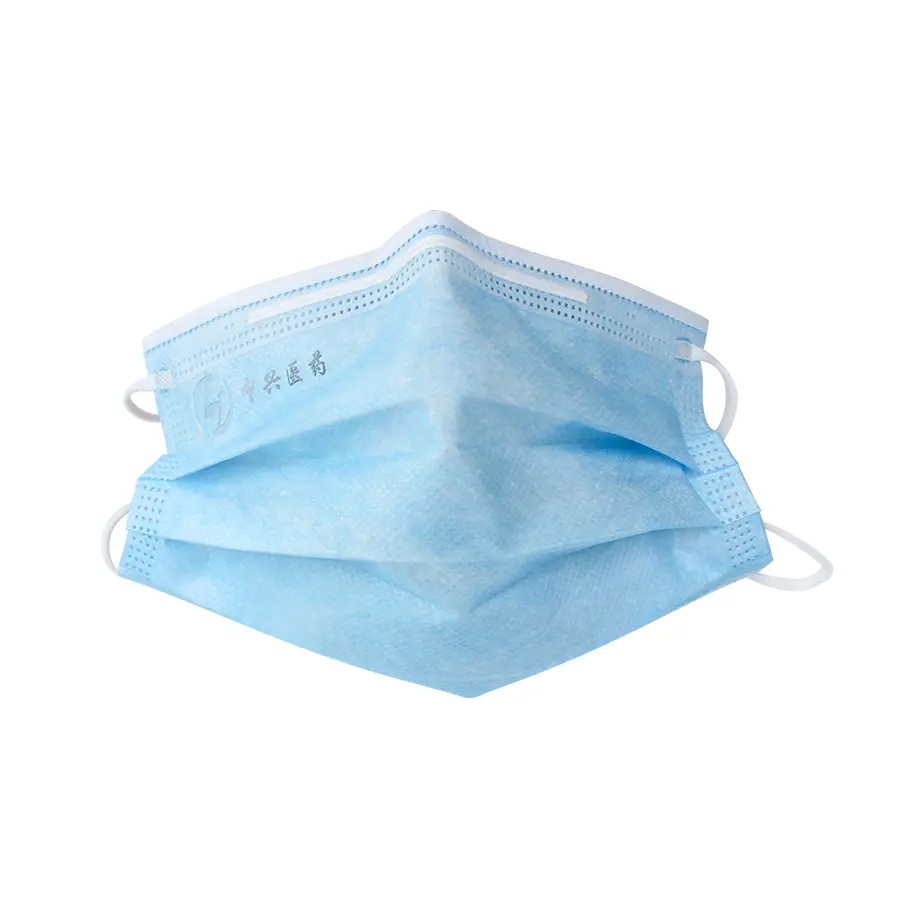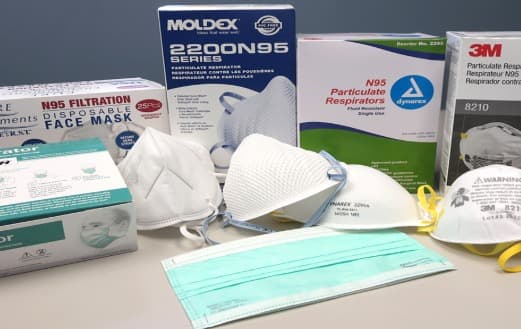د شخصي محافظتي تجهیزاتو (PPE) نړۍ کې ، د "تنفسي" او "ماسک" اصطلاحات اکثرا د تبادلې وړ کارول کیږي. په هرصورت، په متحده ایالاتو کې د مارک تامپسن په څیر د روغتون تدارکاتو مدیر لپاره، یا د هر هغه چا لپاره چې د حرفوي خوندیتوب مسولیت لري، توپیر د ژوند او مرګ مسله ده. یو ساده جراحي ماسک نه دی تنفس کونکی. درک کول د تنفس مختلف ډولونه, څه a د فلټر کولو مخ دی، او ولې NIOSH تصویب د سرو زرو معیار دی چې د ریښتیا ډاډ ترلاسه کولو لپاره خورا مهم دی د تنفسي محافظت. د ایلن په نوم د تولید کونکي په توګه ، په چین کې د اوو تولید لینونو سره چې طبي مصرفي توکو ته وقف شوي ، ما په لومړي سر کې د غلط تجهیزاتو غوره کولو ګډوډي او پایلې ولیدلې. دا لارښود به د نړۍ بې باوره کړي د هوا پاکولو تنفس کونکيد دې تر شا ټیکنالوژي تشریح کړئ فلټر رسنۍ، او تاسو ته د حق غوره کولو ځواک ورکوي تنفس کونکی ستاسو د ټیم د خوندیتوب لپاره.
تنفس څه شی دی او دا څنګه د معیاري مخ ماسک څخه توپیر لري؟
لومړی، راځئ چې ترټولو لوی غلط فهم پاک کړو. یو معیاري جراحي ماسک، لکه طبي جراحي مخ ماسک موږ تولید کوو، په اصل کې د چاپیریال ساتنې لپاره ډیزاین شوی څخه د اغوستونکی. دا د اغوستلو څخه د څاڅکو د مخنیوي لپاره خنډ رامینځته کوي پوزه او خوله د ناروغ یا جراثیمي ساحې ککړولو څخه. دا د مخ په وړاندې د کلک مهر جوړولو لپاره ډیزاین شوی نه دی او په مؤثره توګه نه کوي فلټر ډیر کوچنی بهر هوای ذرات.
A تنفس کونکیله بلې خوا، یوه ټوټه ده شخصي محافظتي تجهیزات لپاره ډیزاین شوی د اغوستو ساتنه څخه چاپیریال د دې اصلي هدف د خطرناک تنفس مخه نیول دي هوایی مواد، په شمول دوړېدوړې، دوړې، ګاز، او بخار. د یو کلیدي ځانګړتیا تنفس کونکی د دې وړتیا ده چې د کارونکي مخ ته یو کلک مهر جوړ کړي، تنفسي هوا مجبوروي چې د هغې څخه تیریږي فلټر مواد دا بنسټیز توپیر دی: ماسک د سرچینې کنټرول لپاره یو نرم خنډ دی، پداسې حال کې چې a تنفس کونکی لپاره د کلک مهر کولو وسیله ده د تنفسي محافظت.
ولې NIOSH تصویب د تنفسي محافظت لپاره د سرو زرو معیار دی؟
کله چې سرچینه اخلئ a تنفس کونکی په متحده ایالاتو کې د کارولو لپاره، یوه اصطلاح د نورو ټولو څخه پورته ولاړه ده: NIOSH تصویب کړ. NIOSH، د د حرفوي خوندیتوب ملي انسټیټیوټ او روغتیا، د متحده ایالاتو فدرالي اداره ده چې د تنفس کونکو ازموینې او تصدیق کولو مسؤلیت لري. الف تنفس کونکی چې ګټلی دی NIOSH تصویب د سختو ازموینو څخه تیر شوی ترڅو ډاډ ترلاسه کړي چې دا د دې لپاره سخت معیارونه پوره کوي د فلټر کولو موثریتد تنفس وړتیا، او ساختماني کیفیت.
دا تصدیق یوازې یو وړاندیز نه دی؛ لپاره اړتیا ده حرفوي خوندیتوب لاندې OSHA (د حرفوي خوندیتوب او روغتیا اداره) مقررات. که الف د کار ځای اړتیا لري د تنفسي محافظت، دوی باید وکاروي تنفس کونکي چې سره مل کیږي د NIOSH معیاري د یو تولید کونکي په توګه چې شمالي امریکا ته صادروي، موږ خپل اړوند محصولات ډاډمن کوو، لکه یو د سا اخیستلو n95 مصنوعي اله، دا سختې اړتیاوې پوره کړئ. د NIOSH د تایید نښه په a تنفس کونکی یا د دې بسته بندي ستاسو تضمین دی چې وسیله به بیان شوي چمتو کړي د ساتنې کچه. تاسو کولی شئ تل د چک کولو له لارې تصدیق تصدیق کړئ د NIOSH تصدیق شوي تجهیزاتو لیست (CEL).

د بیا کارونې وړ تنفس کونکي بمقابله د کار وړ وړ تنفس کونکي: ستاسو د کار ځای لپاره کوم یو سم دی؟
تنفس کونکي عموما په دوه کټګوریو ویشل کیږي: د استعمال وړ او د بیا کارولو وړ. الف دسپوز وړ تنفس کوونکید الف په نوم هم پیژندل کیږي د فلټر کولو مخ پیس تنفس (FFR)، یو سپک وزن دی تنفس کونکی چیرې چې ټول واحد د کارولو وروسته پریښودل کیږي. د N95 د یو تر ټولو مشهور مثال دی دسپوز وړ تنفس کوونکی. دا د مخنیوي لپاره ډیزاین شوي ذرات خطرونه او په عام ډول کارول کیږي د روغتیا پاملرنې ترتیبات او ساختمان.
د بیا کارولو وړ تنفس کونکيپه مقابل کې، یو دوامدار ځانګړتیاوی مخ (a نیم مخ د پوزې او خولې پټول یا a بشپړ مخ پدې کې هم شامل دي د سترګو ساتنهد سیلیکون یا ربړ څخه جوړ شوی. دا مخ پاک او بیا کارول کیدی شي. محافظتي عنصر د بدلیدونکي څخه راځي کارتوسونه او فلټرونه. تاسو کولی شئ یو ځانګړی وټاکئ کارتوس د یو ځانګړي څخه د ساتنې لپاره خطرلکه یو عضوي د بخار کارتوس، یو اسید د ګاز کارتوس، یا یو P100 د ذراتو فلټر. د بیا کارولو وړ تنفس کونکي د ډیری یا لوړ غلظت خطرونو سره د چاپیریال لپاره ډیر استعداد وړاندیز کوي مګر د ساتنې ډیر ښکیل پروګرام ته اړتیا لري.
د N95 ډیکوډ کول: د فیس پیس تنفس فلټر کولو (FFRs) څه دي؟
اصطلاح N95 د کورنۍ نوم بدل شوی، مګر دا په تخنیکي توګه د یو ځانګړي ډول لپاره د تصدیق کچه ده دسپوز وړ تنفس کوونکی: د د فلټر کولو مخ پیس تنفس (FFR). دا دي د هوا پاکولو تنفس کونکي هغه ذرات فلټر کړئ د هوا څخه لکه څنګه چې تاسو تنفس کوئ. ټوله مخ د تنفس کونکی څخه جوړ شوی دی فلټر مواد د "N95" نومول له څخه NIOSH په ځانګړې توګه معنی لري تنفس کونکی فلټر لري د فلټر کولو موثریت لږترلږه 95٪ د غیر تیلو پروړاندې هوای ذرات.
NIOSH FFRs تصویب کړل په ډیرو کې راځي شکلونه او اندازې د مخونو پراخه لړۍ فټ کولو لپاره. ځینې کیدای شي یو ولري د تنفس والو, یو کوچنی پلاستيکي فلیپ چې تړل کیږي کله چې د اغوستونکی تنفس کوي او خلاصیږي کله چې تنفس کوي. دا والو سره موافقت نه کوي اغوستونکی ساتنه او کولی شي تنفس کوونکی د اغوستلو لپاره ډیر راحته کړئ په دننه کې د تودوخې او رطوبت کمولو له لارې مخ. دا مهمه ده چې په یاد ولرئ چې د FFR کار کولو لپاره، د FFRs ستاسو د مخ په وړاندې مهر کويله لارې ټول هوا مجبوروي فلټر. د مخ د ویښتو یا ناسم فټ له امله هر ډول تشې به وړاندې کړي تنفس کونکی غیر موثر
د NIOSH درجه بندي (N, R, P, 95, 99, 100) په حقیقت کې څه معنی لري؟
په ښکاره ډول کریپټیک کوډونه په a NIOSH تصویب شوی تنفس کوونکی په حقیقت کې یو مستقیم طبقه بندي سیسټم دی. دوی تاسو ته د دې په اړه دوه شیان وايي تنفس کونکی فلټرد تیلو مقاومت او د هغې فلټریشن موثریت
دلته یو ساده تحلیل دی:
-
لیک (د تیلو مقاومت):
- ن: Nد تیلو په وړاندې مقاومت لري. دا ترټولو عام ډول دی، د دې لپاره کارول کیږي ذرات مسله لکه دوړېالرجین، او د هوا له لارې پیدا شوي ناروغۍ. د د سا اخیستلو n95 مصنوعي اله کلاسیک مثال دی.
- ر: Rد تیلو سره مقاومت لري. په چاپیریال کې د غوړ غوړ سره کارول کیدی شي، مګر د هغې کارول عموما د 8-ساعت بدلون پورې محدود وي.
- مخ: تېل Pچت د اوږدې مودې لپاره د تیلو پر بنسټ ذرو سره چاپیریال کې کارول کیدی شي، لکه څنګه چې د جوړونکي لخوا مشخص شوي.
-
شمیره (د فلټر کولو وړتیا):
- ۹۵: لږترلږه 95٪ فلټر کوي هوای ذرات.
- ۹۹: لږترلږه 99٪ فلټر کوي هوای ذرات.
- 100: لږترلږه 99.97٪ فلټر کوي هوای ذرات. دا تر ټولو لوړه کچه ده ذرات فلټریشن او د HEPA سره برابر دی فلټر. الف P100 فلټر د لوړې کچې وړاندیز کوي ذرات د ساتنې لپاره د هوا پاکولو تنفس.
نو، a P100 تنفس کونکی یا کارتوس د ذرو په وړاندې د 99.97٪ موثریت سره د تیلو پروف محافظت چمتو کوي ، پداسې حال کې چې یو N95 دسپوز وړ تنفس کوونکی 95٪ موثریت چمتو کوي او نه د تیلو په وړاندې مقاومت.

د کارتریج یا فلټر سره د هوا پاکونکي تنفس کونکي څه دي؟
هاخوا دسپوز وړ تنفس کوونکی، تاسو لرئ د بیا کارولو وړ تنفس کونکي چې د a ترکیب کاروي مخ او a کارتوس یا فلټر. دا د صنعتي کار هارونه دي د تنفسي محافظت. د مخ مهر چمتو کوي، او د کارتوس د هوا پاکولو درانه پورته کول ترسره کوي. الف کارتوس یو کانټینر دی چې د موادو څخه ډک شوی، لکه فعال کاربن، چې یو ځانګړی جذبوي ګاز یا بخار. الف فلټرلکه a P100 پینکیک فلټر، یوازې د نیولو لپاره ډیزاین شوی ذرات مسله
د دې سیسټم لویه ګټه د هغې تطبیق دی. یو کارګر کولی شي ورته کار وکړي د بیا کارولو وړ د مخ تنفس کوونکی مګر بدل کړئ کارتوس د دندې پورې اړه لري. یوه ورځ دوی ممکن یو ته اړتیا ولري کارتوس د عضوي لپاره بخار د انځور کولو په وخت کې، او بل دوی ممکن یو ضمیمه کړي د ذراتو فلټر د شګو کولو لپاره. ډیری کارتوسونه ترکیب کارتوسونه دي ، د دواړو پروړاندې محافظت کوي ګاز او بخار همدارنګه ذرات. د تدارکاتو مدیرانو لپاره، دا پدې مانا ده چې د دواړو مخونو او مختلفو توکو لیست اداره کول کارتوس او فلټر ستاسو د تاسیساتو ځانګړي خطرونو لپاره اړین ډولونه. شرکتونه خوښوي 3M وړاندیز a پراخه انتخاب د دې سیسټمونو څخه.
کله چې د هوا تنفس کونکي یا SCBA یوازینی اختیار دی؟
ټول د تنفس کونکي او ماسکونه موږ تر دې دمه بحث کړی دی د هوا پاکولو تنفس کونکي. دوی په چاپیریال کې د هوا څخه ککړونکي فلټر کولو سره کار کوي. مګر څه که هوا پخپله ستونزه وي؟ په هغه چاپیریال کې چې د اکسیجن کمښت وي (له 19.5٪ اکسیجن څخه کم) یا چیرې چې د ککړتیا غلظت سمدلاسه د ژوند یا روغتیا لپاره خطرناک وي (IDLH) ، د هوا پاکولو تنفس کار به ونه کړي. په دې حالتونو کې، تاسو اړتیا لرئ چې یو تنفس کونکی دا خپل پاک چمتو کوي هوا ورکول.
دوه اصلي ډولونه شتون لري. الف د هوا تنفس کوونکی تنفسي هوا ورکوي اغوستونکی د یوې اوږدې نلی له لارې چې د پاکې هوا سرچینې سره وصل وي. تر ټولو پرمختللې بڼه د تنفسي محافظت دی په ځان کې د تنفس کولو وسایل (SCBA). دا ورته ډول دی وسیله اور وژونکي کاروي، چیرته چې اغوستونکی په شا کې د فشار شوي هوا ټانک لیږدوي. یو SCBA ترټولو لوړ چمتو کوي د تنفسي محافظت کچه ځکه چې دا د شاوخوا فضا څخه په بشپړه توګه خپلواکه ده.
تاسو څنګه د ځانګړو هوایی خطرونو لپاره سم تنفس غوره کوئ؟
د مناسب انتخاب د a تنفس کونکی یوه رسمي پروسه ده چې باید د لیکلو برخه وي د تنفسي محافظت پروګرام. لومړی ګام د خطر پیژندل دي. ایا دا یو ذرات لکه سیلیکا دوړې یا a لوګی له ویلډینګ څخه؟ ایا دا یو ګاز لکه کلورین یا a بخار د محلول څخه؟ یا دا یو ترکیب دی؟
یوځل چې خطر وپیژندل شي ، تاسو باید د هغې غلظت وټاکئ. د دې معلوماتو پراساس، تاسو کولی شئ انتخاب کړئ ښي تنفس کوونکی. د ډیری عام لپاره ذرات د یو ټاکلي غلظت لاندې خطرونه، a د استعمال وړ د سا اخیستلو n95 مصنوعي اله ډیری وختونه کافي وي. د ځانګړي لپاره ګاز یا بخارتاسو به یو ته اړتیا ولرئ د بیا کارولو وړ تنفس کونکی د سم کیمیاوي سره کارتوس. تل د جوړونکي لارښوونو سره مشوره وکړئ او OSHA لارښوونې د بیلګې په توګه، ځینې مقررات ممکن د اړتیا وړ وي بشپړ مخ تنفس کونکی تر a نیم ماسک د لوړ محافظت فکتور چمتو کول. د PPE جامع پلان کې نور توکي هم شامل دي لکه د جلا کولو جامې د ویشلو او تماس خطرونو څخه د ساتنې لپاره.
د هر مخ پیس تنفس کونکي لپاره د فټ ازموینې مهم اهمیت
تاسو کولی شئ خورا پرمختللی ولرئ P100 کارتوس یا د کرښې څخه پورته د سا اخیستلو n95 مصنوعي اله، مګر که دا په سمه توګه مهر نه کوي اغوستونکی مخ، دا تقریبا بې ګټې دی. همدا لامل دی OSHA مخکې د فټ ازموینې ته اړتیا لري اغوستونکی سخت فټینګ کاروي تنفس کونکی په یو ککړ چاپیریال کې او هر کال وروسته. د فټ ازموینه معاینه کوي د خپل مخ په شاوخوا کې مهر کړئ د تنفس کونکی.
د فټ ازموینې دوه ډوله شتون لري. کیفیتي ازموینه د اغوستونکي د خوند یا بوی په احساس تکیه کوي ترڅو د لیک کشف کړي. یو کمیتی ازموینه د ماشین څخه کار اخلي ترڅو د لیک ریښتین مقدار اندازه کړي مخ. یو مناسب فټ دومره مهم دی چې هر هغه څه چې په مهر کې مداخله کوي، لکه ږیره، د سخت فټنګ اغوستل اجازه نلري. تنفس کونکی. دا ګام ډاډ ورکوي چې د محافظتي تجهیزات په حقیقت کې محافظت چمتو کوي.

د تنفس وړ تنفس کونکي تولید کونکي کې څه باید وګورئ
د مارک په څیر د پیرودونکي لپاره، د سم جوړونکي سره ملګرتیا کلیدي ده. کله چې سرچینه اخیستل د ضایع کیدو وړ تنفس کونکيپه ځانګړې توګه د بهر څخه، د تصدیق کولو لپاره ډیری شیان شتون لري. لومړی او تر ټولو مهم، د ثبوت غوښتنه وکړئ NIOSH تصویب د ځانګړي لپاره د TC (ازموینې او تصدیق) شمیره غوښتنه وکړئ تنفس کونکی موډل او په اړه یې تایید کړئ د NIOSH تصدیق شوي تجهیزاتو لیست.
د تصدیق هاخوا ، د تولید کونکي کیفیت مدیریت سیسټم (QMS) په اړه پوښتنه وکړئ. ایا دوی ISO 9001 تصدیق شوي؟ د طبي درجې محصولاتو لپاره، ایا دوی د ISO 13485 سره مطابقت لري؟ د یو ملګري په لټه کې شئ چې د دوی د موادو او تولید پروسو په اړه شفاف وي. لپاره 3M دسپوز وړ تنفس کونکي یا نور لوی برانډونه، دا معلومات په اسانۍ سره شتون لري. د نورو عرضه کونکو لپاره، دا ستاسو دنده ده چې پوښتنه وکړئ. یو باوري تولید کونکی به د اسنادو چمتو کولو او ژمنتیا ښودلو کې کومه ستونزه ونلري حرفوي خوندیتوب او روغتیا. دوی پوهیږي چې د دوی کیفیت تنفس کونکی د پای کارونکي روغتیا سره مستقیم تړاو لري. موږ په دې روڼتیا ویاړو چې په متحده ایالاتو، اروپا او آسټرالیا کې زموږ د شریکانو لپاره روښانه او د باور وړ اکمالاتو لړۍ چمتو کوي.
کلیدي ټکي
- تنفسي کوونکی او ماسک: A تنفس کونکی ساتنه کوي اغوستونکی د تنفس شوي هوا فلټر کولو سره او یو کلک مهر ته اړتیا لري. ماسک یو نرم خنډ دی چې چاپیریال د اغوستونکي تنفس شوي څاڅکو څخه ساتي.
- NIOSH اړین دی: لپاره د کار ځای په متحده ایالاتو کې کارول، a تنفس کونکی باید وي NIOSH تصویب کړ. دا تصدیق د هغې تضمین کوي فلټریشن فعالیت
- د بیا کارولو وړ په مقابل کې د ضایع کیدو وړ: د تصفیه وړ فلټر کولو مخ پیس تنفس کونکي (لکه N95) لپاره دي ذرات خطرونه او د کارولو وروسته له مینځه وړل کیږي. د بیا کارولو وړ تنفس کونکي دوامدار استعمال کړئ مخ د بدلیدونکي سره کارتوسونه او فلټرونه د مختلفو لپاره ګاز, بخار، او ذره خطرونه
- په درجه بندي پوه شئ: خط (N,R,P) د تیلو مقاومت په ګوته کوي او شمیره (95, 99, 100) لږترلږه په ګوته کوي د ذراتو فلټر کولو موثریت.
- فټ هرڅه دي: A تنفس کونکی باید په سمه توګه ازموینه وشي اغوستونکی د کلک مهر ډاډ ترلاسه کولو لپاره. د ښه مهر پرته، حتی غوره تنفس کونکی لږ محافظت وړاندې کوي.
- خپل عرضه کوونکي تایید کړئ: تل تایید کړئ NIOSH تصدیق کول او د کیفیت مدیریت سیسټمونو په اړه پوښتنه وکړئ کله چې سرچینه اخلي د تنفسي محافظت.
د پوسټ وخت: اګست-27-2025





